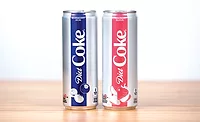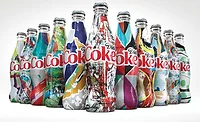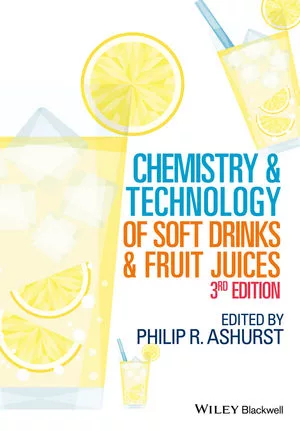2010 Soft Drink Report: CSDs struggle as consumer perception shifts

PepsiCo, Purchase, N.Y., and The Coca-Cola Co., Atlanta, woke up the carbonated soft drink category during this past year by acquiring their largest U.S. bottlers. While these acquisitions didn’t stop the downward momentum of the segment — at least not yet — it did take some of the news off declining volume.
According to The Nielsen Co., Schaumburg, Ill., CSD dollar sales grew 2.6 percent to $18.8 billion, while volume remained flat compared to last year in U.S. food, drug and mass merchandise stores, including Wal-Mart, for the year ending Jan. 23, 2010. For the year ending Jan. 24, 2009, sales increased less than 1 percent and volume dropped 3.7 percent from 2008, Nielsen says.
While the industry estimates the total CSD category to be a nearly $40 billion market, it continued to struggle in 2009.
“It’s a combination of the economic downturn as well as a lot of negative publicity around the soft drink industry that’s really leading to the decline,” says Alison Lipson, a research analyst at Euromonitor International, Chicago. “Mostly consumers are really cutting back on discretionary purchases and sometimes they just don’t see the need for buying soft drinks. Additionally, because of the negative publicity, when they are spending money on beverages they are choosing healthier options — bottled functional waters mostly and ready-to-drink teas.”
The recession placed additional pressures on the CSD industry by changing purchasing behaviors based on unemployment, the housing market and the lack of confidence in the stability of the economy for the foreseeable future, says Tom Pirko, president of Bevmark LLC, Buellton, Calif.
“As long as we’re dealing with that, the industry is in a reactive position because it has to find a way to stimulate consumers who simply aren’t going to buy as much or drink as much,” he says. “We are not able to effectively deal with it by the standard measures of simply making the product less expensive, by having great promotion, by doing necessarily better packaging or more exciting flavors or drinks. We have to deal with the fact that it’s an environment where we have to hold on and redefine ourselves in a way that fits the economics.”
Like many other consumer products goods categories in the economic downturn, branded CSDs lost share to private label options. Branded CSD sales grew 2.3 percent, while private label CSD sales increased 6.6 percent, for the year ending Jan. 23, 2010, Nielsen reports. Branded CSD volume remained relatively flat, while private label CSD volume grew nearly 2 percent, during the time period, it says. Private-label CSDs are expected to continue to take share from branded soft drinks in the short term.
“However, once the economy starts to rebound, I think that branded soft drinks will have an advantage for those consumers who are continuing to purchase carbonated soft drinks because they are typically the first to market with new varieties or new flavors where private label takes a little bit longer to react to some of those trends,” Lipson says.
The CSD category does have an advantage over other beverage categories in regard to private label products as well. “If you are a true hardcore soft drink consumer, you still have strong brand loyalty, whereas in other categories like bottled water or some juices people don’t always have such strong brand loyalty,” Lipson says.
Paradigm shift
While many consumers are loyal to CSDs and their favorite brands, others have turned their backs on the category. CSDs went from a position in which the industry was able to market sparkling beverages as an essential element to American consumers’ lifestyles to having a shadow cast on them, Pirko says.
“The allusion that I use with many clients is I tell them, ‘Remember that if you are in a park as a mother and you give a kid a Coke or Pepsi, the other mothers will surround you and accuse you of child abuse,’” he says.
The paradigm of beverages and the way they are marketed and sold in the U.S. market now is shifting over to drinks with some benefits that make consumers feel healthier, Pirko says.
“Things that are sold that have some beneficial attribute are the future of the beverage business, and soft drinks are being left behind,” he says. “So you have this tremendous marketing machine, which is all lifestyle oriented, which is now without its objectives because the new way of thinking is ‘What am I putting into my body? What is it going to do to me? Is it going to make me fat or is it going to make me unhealthy? Is there some reason for drinking this when I should be drinking one of these many, many other things that make claims to have some beneficial affect?’”
Diet colas have fared better in this paradigm shift than their regular counterparts. For example, Coca-Cola in its fourth quarter and full year results reported that Coca-Cola Zero delivered double-digit unit case volume growth in North America in the quarter, achieving 15 consecutive quarters of double-digit growth. Unit case volume in North America for Coca-Cola’s sparkling beverages, which represents all ready-to-drink beverages with carbonation including energy drinks, carbonated waters and flavored waters, declined 2 percent in the quarter.
“Coke Zero has done really well,” Lipson says. “It’s still new so the novelty aspect is still there. It’s also a zero calorie product without the diet label, which I think appeals to a greater set of consumers — people who don’t want to buy something that explicitly said ‘diet’ and are looking for a healthier lower calorie alternative.”
For another lower calorie option, late last year, Coca-Cola rolled out out a 7.5-ounce, 90-calorie slim mini can for its Coca-Cola, Cherry Coca-Cola, Sprite, Fanta Orange and Barq’s Root Beer brands. Coca-Cola also announced a new partnership with the Healthy Weight Commitment Foundation, which advocates a common-sense approach to help reduce obesity by 2015.
“Slim cans are a novelty concept,” Lipson says. “People will be willing to try things that they like the newness and exclusivity of. Slim cans also help for portion control because they are mini and people can obviously make the effort if they are trying to watch consumption.”
In other efforts to combat the obesity epidemic, the American Beverage Association (ABA), Washington, D.C., in February announced beverage companies’ plans to make the calories in their products more consumer-friendly by putting the information on the front of all their packages, vending machines and fountain machines. The companies will coordinate with the Food and Drug Administration (FDA) to implement the calorie initiative. The industry will start implementing the initiative across the country this year with completion set for 2012.
The beverage industry also is committed to continue reducing the beverage calories in the marketplace through innovation, smaller portion sizes and further marketing of their low-calorie beverages, the association says. Coca-Cola already made a global commitment to put calories on the front of the package on nearly all its products, and PepsiCo announced its plans to list calorie content on the front of its beverage containers, vending machines and fountain equipment by the end of 2010, it said. Dr Pepper Snapple Group (DPSG), Plano, Texas, also said it would introduce new labels this year with nationwide completion in 2012.
Placing calorie content front-of-package will not be without its challenges, Lipson says.
“I know consumers are already aware, and some people are looking out for it, but I do think it will open the eyes of other people who aren’t paying attention or maybe are turning a blind eye,” she says.
Another way the CSD category is providing healthier alternatives to consumers is through new natural zero calorie sweetener options. With the FDA approval of stevia-based rebaudioside A (reb A) in late 2008, Coca-Cola launched Sprite Green in early 2009, and became the first major soft drink company to try a stevia-based sweetener in a carbonated soft drink.
Last month during its annual investors meeting, PepsiCo said two reasons why CSD consumption has declined is because of the calories and because of high fructose corn syrup, the sweetener commonly used in regular soft drinks. During the call, PepsiCo said it was working to address both those barriers this year.
“The new innovation can only come from non-caloric natural sweeteners,” said Massimo d’Amore, chief executive officer of Pepsi Beverages America, during the meeting. “We know that consumers love bubbles. The problem is that bubbles come with too many calories and other stuff they don’t want. So when these calories are artificial, these are barriers to consumption.”
Going forward, PespiCo said it is investing resources in sweetening CSDs with reb A or future generations of natural non-caloric sweeteners in order to finally answer consumer demands and offer a solution if a tax on sugared drinks would be instituted in the United States.
While not a low calorie alternative, in 2009 PepsiCo found success with Pepsi and Mountain Dew Throwback, two products sweetened with sugar. “It was a huge success for us and added a full share point during the time it was in market,” said Jill Beraud, chief marketing officer and president, Joint Ventures, PepsiCo Beverages Americas, during PepsiCo’s investor meeting. Throwback resonated with consumers because of its nostalgic quality, taste and its ingredients, she said.
In select markets last year, Pepsi-Cola North America also released Pepsi Natural, made with sparkling water, natural sugar, caramel and kola nut extra.
In another move toward natural ingredients, last year Coca-Cola reformulated its Fanta Orange, Fanta Apple and Fanta Grapefruit with 100 percent natural flavors. This year, Coca-Cola North America also introduced Cascal, a hand-crafted all-natural soda sold exclusively at Whole Foods Markets nationwide for a limited time.
For the holiday season, DPSG reintroduced and reformulated its Pomegranate 7UP to include the antioxidant vitamin E. The beverage contained 10 percent of the daily recommended value of vitamin E per 8-ounce serving. DPSG also has plans for a version of Dr Pepper formulated with sugar to release this fall.
Bringing consumers back
While healthier CSD options is one way major soft drink makers are bringing consumers back to the category, encouraging different consumption occasions and expanding into new locations also are picking up, Euromonitor’s Lipson says. “Last year, Dr Pepper expanded into about 14,000 McDonald’s outlets,” she says. “It is trying to capture sales while [consumers] are out, and maybe that will translate into sales at retail for people to continue consumption.”
Appealing to consumers with customization and more options is a concept Coca-Cola North America has been testing with its new Coca-Cola Freestyle fountain dispenser. The fountain dispensers being tested are touch screen operated, enabling consumers to select from more than 100 brands – including varieties of waters, juices, teas and sparkling beverages.
“It’s something that will generate interest in the category and possibly if some of those combinations are popular or successful, they might introduce products based on those combinations that customers create out of the machines,” Lipson says.
PepsiCo also has found success in non-traditional marketing campaigns for the Pepsi Refresh Project and Mountain Dew Dewmocracy promotion. SymphonyIRI Group Inc., Chicago, named Mountain Dew Dewmocracy as one of its 2009 New Product Pacesetters. Mountain Dew Dewmocracy ranked eighth and posted $52 million in sales for its consumer-created flavor, Voltage. The company is reprising the promotion again this year, it said during its investors meeting.
2010 is expected to be a similarly difficult year for the major CSD companies. In turn, they are expected to continue to place more emphasis on growing and creating non-carbonated brands.
“You can only extend [CSDs] so far,” Pirko says. “Sometimes you need to do different things and take the risk.” BI
Related Links:
Category Focus: 2009 Soft Drink Report
Looking for a reprint of this article?
From high-res PDFs to custom plaques, order your copy today!







